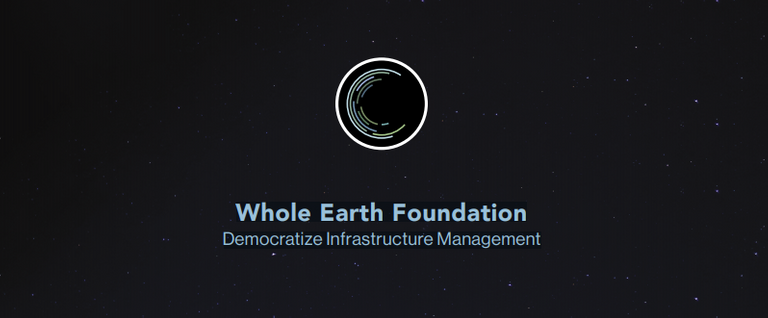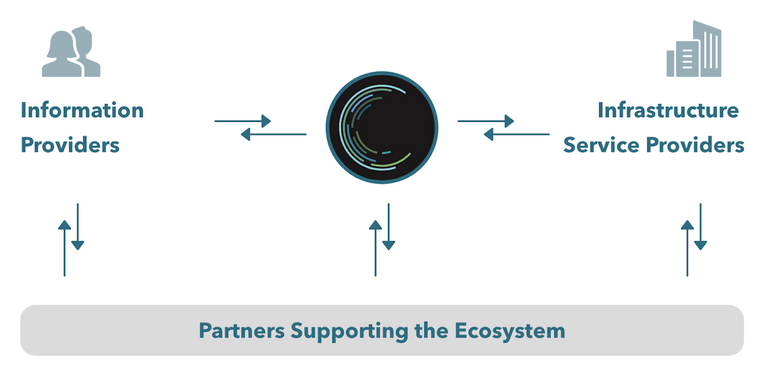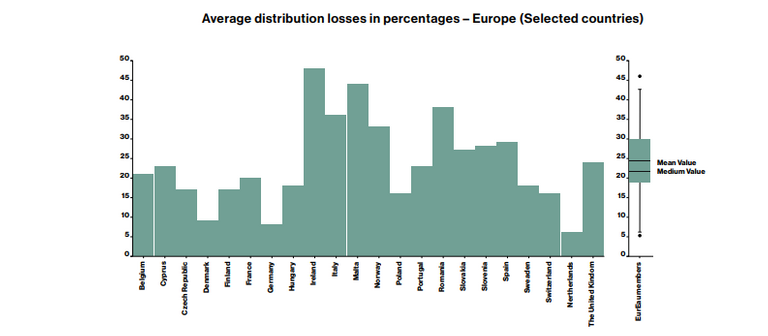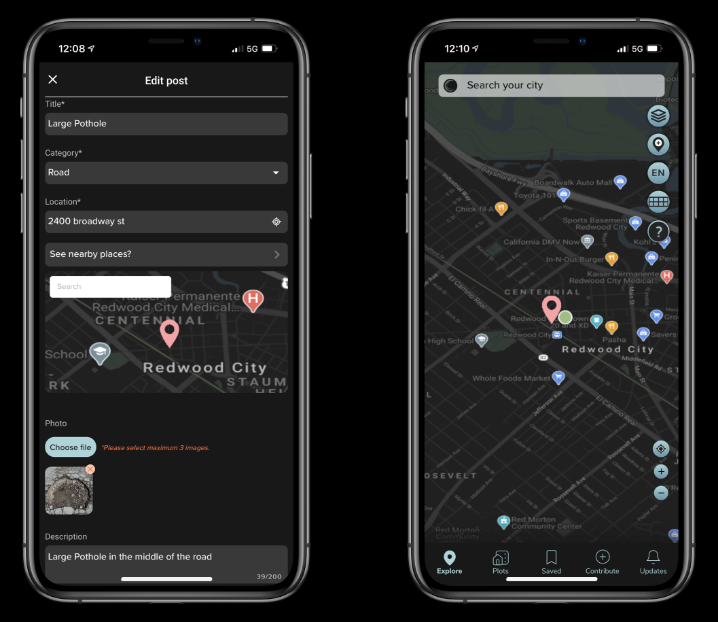RushMoon is automatic liquidity acquisition yield farm and AMM.
What is RushMoon?
RushMoon is automatic liquidity acquisition yield farm and AMM.
Digital Bureaucracy is a Project that will enable you to perform your time-consuming and tiring daily bureaucratic transactions between individuals, institutions and countries using the Blockchain network, quickly and cost effectively.
About Digital Bureaucracy Blockchain
Digital Bureaucracy is a public blockchain designed for the mass adoption of blockchain technology by Countries, institutions, enterprises, or individuals of all sizes. It can be driven, fast, secure and requires appropriate processing costs. It is intended to form the basis of a Bureaucracy blockchain ecosystem.
Technically, the Digital Bureaucracy blockchain is built on proven existing blockchain innovations and new technologies is created to drive mass adoption.
What Is DBC?
DBC is the first Decentralized Bureaucracy System that simplifies and standardizes data using blockchain technology. We facilitate bureaucracy across Individuals, Institutions, and Countries on the Blockchain Network.
What is DBCChain?
DBCChain is an Artificial Intelligence (AI) software developed by the Digital Bureaucracy team in open source. In order to make the use of DBCChain software specific to countries, institutions, and companies a very simple process, our team continues to work. We aim to ensure that it can be installed on all your devices with just one click, but also become very simple to use.
How Does DBC Work?
Digital Bureaucracy is making our lives difficult. It is instated everywhere and is carried out by the Municipality. Official documents, Invoices, Home and Vehicle purchase and sale, School and Education, Health and Hospital, Finance and Business, Customs procedures, Passport and Identity procedures are just some of the areas of example.
The DBC Project has made it possible to manage the tedious document transactions that causes complexity in our lives. For a moment, imagine that paper is not used within the World. With DBC, you will be able to send and receive your invoices, official documents, insurance and hospital documentation, customs and tax transactions, home, and car buying/ transactions, international, official, or personal information/documents using a single click encrypted over the Blockchain Network.
Combine the structure of Artificial Intelligence and Blockchain, allowing you to trade securely and quickly.
Bureaucratic procedures will rely on the help of Artificial Intelligence completely. It is a great project that will ensure swift and reliable transfers over the blockchain network.
Dependable and rapid payments. You will be able to send even the highest payments at the lowest cost.
Safe storage of school and hospital transactions on the Blockchain network. It enables making an action or obtaining information simpler with just a click.
To facilitate the blockchain network in our daily lives, DBC started to develop its own Blockchain infrastructure to provide convenience in the listed areas below:
DBC Solution
The DBC token has been created to be used in the Digital Bureaucracy Infrastructure and to become the currency of the future. DBC token is the Crypto Currency that will be used in your bureaucratic transactions around the world.
What is DBC Token?
DBC Token is a virtual currency created to cover the Blockchain network fees of the Digital Bureaucracy system. Efforts are underway for our project to take party in many Exchanges according to our DBC Token Target table.
DBC Token will be used to cover Digital Bureaucracy Blockchain Network fees. Binance Smart Chain (BSC) Manufactured using BEP20 Smart Contract.
• Token Symbol Name: Digital Bureaucracy
• Short Token Name: DBC
• Token Standard: BEP20
• Blockchain Platform: Binance Smart Chain
• Total Supply: 200,000,000 DBC
DBC Token Sale
The DBC token was created using Binance Smart Chain (BSC) BEP20 Smart Contrac. The token’s third party service wallets, exchanges, etc. It provides compatibility with and easy-to-use integration.
How can I participate in the DBC Token sale?
DBC token is issued decentrally. It is a unique platform; completely user friendly that is secure, smart, and easy to use. You can buy the tokens from the ‘Token Sales’ section of our website. You are also able to have DBC Tokens free of charge by following our Social Media accounts.
Start: 2021-04-30
Total Supply: 200.000.000 DBC umber of tokens for sale: 25.000.000 DBC
Tokens exchange rate: 1 DBC = 0.010 USD
Acceptable currencies: ETH, BNB, BTC, USDT
Minimal transaction amount 1000 DBC / 10 USD
DBC token is given decentrally. It is a fascinating stage; absolutely straightforward that is secure, insightful, and easy to use. You can buy the tokens from the 'Token Sales' essential for our site. You are similarly prepared to have DBC Tokens in vain cash based by following our Social Media accounts.
For more information please visit the links below:
ICO and Presale
Stage A - Presale Global
• Date: 30 April 2021 - 31 July 2021
• Bonus: 1% - 5,000 DBC+ 2% - 10,000 DBC+ 3%
• Stage A Sales: 25,000,000 DBC ($250,000)
• Stage A sales price: 0.010$
• Investor Data (KYC): NO (can be purchased anonymously)
• DBC Token Distribution: All DBC Tokens will be distributed when the ICO Expires on April 30, 2022.
Stage B - Presale Global
• Date: 1 August 2021 - 31 October 2027
• Bonus: 1% - 5,000 DBC+ 2% - 10,000 DBC+ 3%
• Phase B Sales: 25,000,000 DBC ($1,250,000)
• Stage B sale price: 0.050$
• Investor Data (KYC): NO (can be purchased anonymously)
• DBC Token Distribution: All DBC Tokens will be distributed when the ICO Expires on April 30, 2022.
Stage C - Presale Global
• Date: 1 November 2021 - 31 January 2022
• Bonus: 1% - 5,000 DBC+ 2% - 10,000 DBC+ 3%
• Phase C Sales: 25,000,000 DBC ($3,750,000)
• Stage C sale price: 0.15$
• Investor Data (KYC): NO (can be purchased anonymously)
• DBC Token Distribution: All DBC Tokens will be distributed when the ICO Expires on April 30, 2022.
Stage D - Presale Global
• Date: 1 February 2022 - 30 April 2022
• Bonus: 1% - 5,000 DBC+ 2% - 10,000 DBC+ 3%
• Phase D Sales: 25,000,000 DBC ($5,000,000)
• Stage D sales price: 0.20$
• Investor Data (KYC): NO (can be purchased anonymously)
• DBC Token Distribution: All DBC Tokens will be distributed when the ICO Expires on April 30, 2022.
For more information please visit the links below:
Web: https://www.digitalbureaucracy.org/
ICO&Airdrop: https://dbc.digitalbureaucracy.org/
Twitter : https://twitter.com/DigiBureaucracy
Telegram Group: https://t.me/digitalbureaucracy
Facebook Group: https://www.facebook.com/groups/digitalbureaucracy
Reddit: https://www.reddit.com/user/Digitalbureaucracy
Medium: https://medium.com/@Digitalbureaucracy
ANN: https://bitcointalk.org/index.php?topic=5328282.0
Whitepaper: https://www.digitalbureaucracy.org/Whitepaper-EN.pdf
by :Username: warulor540
My Profile Bitcointalk: https://bitcointalk.org/index.php?action=profile;u=2804131

wir die Welt umfassend untersuchen, sehen wir ein wachsendes Problem der alternden Infrastruktur.Leider haben Dienstleister, die diese Infrastrukturanlagen verwalten, die von ihnen verwalteten Einrichtungen nicht immer angemessen gewartet und erneuert.Nehmen wir zum Beispiel die alternde Wasserinfrastruktur der Vereinigten Staaten, in der Schätzungen zufolge etwa 1 Billion USD an Kapitalinvestitionen erforderlich sein werden, um alle Wasserleitungen bis zum Jahr 2050 (AWWA) zu ersetzen. Der größte Teil der Wasserleitungsinfrastruktur in den Vereinigten Staaten wurde zwischen dem späten 19. Jahrhundert und den 1970er Jahren installiert, daher ist der größte Teil mindestens 40 Jahre alt, wobei ein großer Teil zwischen 60 und 80 Jahre alt ist. Mit der Nutzungsdauer der meisten Arten von Wasserleitungen im Bereich von 60 bis 100 Jahren müssen immer mehr der vorhandenen Leitungen ersetzt werden.
Die meisten Bürger sind sich dieser Situation oder der Tatsache, dass sie die Last dieser Kosten in Form erhöhter Wasserrechnungen tragen werden, jedoch nicht vollständig bewusst.Dieses Problem betrifft nicht nur die USA. In den meisten Teilen Europas gibt es sogar ältere Rohrsysteme, und in den meisten Ländern der Welt gibt es ähnliche Probleme.
Bei weiterer Untersuchung dieses Problems werden zwei grundlegende Merkmale der öffentlichen Infrastruktur deutlich:
Infrastrukturdienstleister werden häufig von öffentlichen Einrichtungen verwaltet oder von Regierungsbehörden streng reguliert. Oft fehlt es ihnen an Anreizen, Ressourcen zu investieren, um effektive und effizientere Geschäftspraktiken zu integrieren. Andererseits hat die breite Öffentlichkeit, die von diesen Diensten profitiert, keine Möglichkeit, über den Status der von ihnen genutzten Infrastruktur informiert zu werden, und hat wenig Anreiz, Dienstleister zu veranlassen oder an Aktivitäten teilzunehmen, die ihnen helfen, effektiver zu arbeiten. Wenn diese Probleme nicht behoben werden, können sie zu erheblichen Störungen in den Gemeinden führen und zu einem erheblichen Verlust wertvoller Ressourcen führen.



Um dieses Problem anzugehen, schlägt die Whole Earth Foundation (WEF) vor, die Whole Earth Access (WEA) -Plattform zu nutzen, um Bürger (oder Informationsanbieter) und Infrastrukturdienstleister durch den Zugriff auf eine Datenbank mit detaillierten Informationen zu ihrer Infrastruktur zu verbinden ein Ökosystem zur Erleichterung der Kommunikation und Zusammenarbeit.
Im Mittelpunkt steht die Umweltdatenbank, die durch Zusammenlegung und Geoverarbeitung mehrerer öffentlicher und privat verfügbarer Datenquellen erstellt wird. Nach der Normalisierung werden die Daten einer zusätzlichen Verarbeitung unterzogen, um in einer sehr hohen geografischen Auflösung verfügbar zu sein, die heute in den meisten öffentlich verfügbaren Datensätzen nicht verfügbar ist. Die Daten werden auch vorbereinigt, wodurch die Entwicklungszeit für maschinelle Lernprojekte von Drittentwicklern verkürzt wird. Informationsanbieter können mit diesen Daten über eine Benutzeroberfläche (z. B. eine mobile App) interagieren, sodass sie über den Status der Infrastruktur in ihrer Umgebung informiert bleiben und so das Informationsungleichgewicht zwischen ihnen und den Infrastrukturdienstanbietern verringern können.
Darüber hinaus können die Bürger nicht nur Zugang zu Daten haben, sondern auch die Datenbank aktiv unterstützen und folglich die zugrunde liegende Infrastruktur aufrechterhalten. Eine gemeinsame Einschränkung bestehender Umweltdatenbanken ist die langsame Erneuerung von Informationen - eine durchschnittliche Wartezeit von 1 bis 5 Jahren. Die WEA-Plattform geht davon aus, dass dies durch Crowdsourcing-Datenerfassung behoben werden kann. Die Teilnehmer des Ökosystems werden Daten bereitstellen, um eine aktuelle Datenbank zu führen, mit der Infrastrukturdienstleister fundiertere Entscheidungen treffen können. Gamification-Mechanismen wie Quests werden untersucht, um das Engagement der Teilnehmer zu motivieren.
Die Teilnehmer erhalten ein Blockchain-basiertes Token (Whole Earth Coin, im Folgenden WEC) für die Bereitstellung hochwertiger Daten, das einen freien und offenen Marktplatz ermöglicht, auf dem wichtige Daten erstellt und effizient ausgetauscht werden können.
Dieser Ansatz soll dazu beitragen, ein System zu etablieren, das die regelmäßige Wartung und Erneuerung der Infrastruktur fördert und gleichzeitig das Interesse der Bürger an dem Thema weckt. Wenn das Interesse der Öffentlichkeit weiter wächst, wird diese Dynamik den Aufbau einer Gesellschaft beschleunigen, in der die Bürger aktiv mit Institutionen in gemeinsamen Projekten zusammenarbeiten, die auf Umweltverbesserungen ausgerichtet sind.



Whole Earth Access (WEA) umfasst die folgenden drei Schlüsselgruppen:
Unter verschiedenen infrastrukturbezogenen Dienstleistungen mit Nachhaltigkeitsthemen wird sich das WEF zunächst auf Wasser konzentrieren. Es ist die grundlegendste Ressource für alles Leben und eine wichtige Ressource für unsere Gesellschaft
Im Dezember 2020 startete die Chicago Mercantile Exchange den weltweit ersten Wasser-Futures-Kontrakt, um sich gegen die steigenden Wasserpreise abzusichern und das Wasserversorgungsrisiko zu steuern. Dies ist jedoch nur eine vorübergehende Lösung und löst nicht die grundlegende Ursache für Wasserknappheit. Darüber hinaus besteht das Risiko, dass Markttransaktionen den Gewinnen Vorrang vor der Gewährleistung einer angemessenen Verfügbarkeit von Wasser und des öffentlichen Zugangs dazu einräumen. Andererseits fördert der WEF-Ansatz den sozialen Wandel in der wasserbezogenen Infrastruktur durch Beteiligung der Öffentlichkeit.In gewissem Sinne bieten wir nicht nur eine Plattform für die Teilnahme von Menschen an öffentlichen Angelegenheiten, sondern schaffen auch eine neue kollektive Form der wirtschaftlichen Zusammenarbeit.



Ein wesentlicher Bestandteil der Umsetzung des Ansatzes ist eine Methode zur Quantifizierung des Werts der bereitgestellten Informationen. Wenn beispielsweise ein allgemeiner Bürger Informationen zur Verfügung stellte, die zur Beseitigung eines Wasserleitungslecks führten, gelang es ihm wahrscheinlich, Wasser zu sparen, das sonst verloren gegangen wäre. Mit anderen Worten, wenn dieses Wasser jetzt zugänglich gemacht wird, kann dies als Äquivalent zur Wassererzeugung angesehen werden. Daher wird der Wert der Informationen aus ihrer Fähigkeit abgeleitet, Ressourcen wie Wasser zu schonen und zu schaffen.
Die Darstellung auf diese Weise ist eine leistungsstarke Methode, um Ressourcen zu schonen, die Infrastruktur zu erhalten und Einsparungen zu erzielen. Beispielsweise wird Wasser, das aus Gründen wie Undichtigkeiten in Verteilerrohren nicht von der Wasserversorgungsstation zum Verbraucher gelangt, üblicherweise als „nicht umlaufendes Wasser“ bezeichnet. Die Menge an „nicht umsatzwirksamem Wasser“ in Japan entspricht 1,6 Milliarden USD pro Jahr - ein erheblicher Betrag an potenziellen Einsparungen.Nonrevenue-Wasser ist in mehreren Ländern, einschließlich europäischer und anderer asiatischer Länder, ein weit verbreitetes Problem. Wir können jedoch noch viel mehr erreichen, wenn wir Ressourceneinsparungen als Äquivalent zur Ressourcenerstellung verstehen und darstellen.
Basierend auf dieser Methode zur Quantifizierung des Werts der gesparten Wasserressourcen können die Teilnehmer Token für ihre Datenbeitragsanstrengungen verdienen. Ein Teil des Prozesses zur Berechnung des verdienten Betrags umfasst die Verwendung von Algorithmen, die von Drittentwicklern entwickelt wurden, um Faktoren wie den Verschlechterungszustand von Wasserleitungen vorherzusagen. Zum Beispiel hat Fracta, mit dem das WEF zusammenarbeitet, die Nützlichkeit der Umweltdatenbank demonstriert, indem es modernstes maschinelles Lernen entwickelt hat, um die Verschlechterungszustände von Wasserleitungen vorherzusagen. Durch das Lernen detaillierter Umweltfaktoren, die in der Datenbank erfasst wurden, konnte das Modell den Anbietern ermöglichen, genau vorherzusagen, welche Wasserleitungen das höchste Ausfallrisiko aufweisen. Dies hat es den Anbietern ermöglicht, erfolgreich vorbeugende Maßnahmen zur Behebung von Infrastrukturproblemen zu ergreifen, bevor schädliche Ausbrüche auftreten.Beheben Sie unsichtbare Lecks und sparen Sie Wasser.Es wird erwartet, dass sich Algorithmen wie diese weiterentwickeln und in Zukunft weiterentwickelt werden, um eine verbesserte Leistung zu erzielen.Gleichzeitig werden Größe, Menge an Details und Funktionen der Datenbank aufgrund der Crowdsourcing-Datenerfassung weiter zunehmen
Bemühungen.
Wir planen, uns mit Marktpartnern abzustimmen, um Möglichkeiten für die Verwendung des WEC-Tokens für Waren und Dienstleistungen zu schaffen.



Um die Nutzung und Akzeptanz der WEA-Plattform zu fördern, wird das WEF eine Reihe von Tools für diejenigen bereitstellen, die sich beim Start des Netzwerks mit unserer Plattform beschäftigen möchten.
Allgemeine Bürger können sich mit der Umweltdatenbank verbinden, auf diese zugreifen und Daten beitragen. Die Teilnahme an der Plattform und die Bereitstellung von Daten werden gefördert, indem Gamification-Mechanismen untersucht werden, z. B. der Einsatz von Quests, um Benutzer an Aufgaben zu beteiligen. Benutzer können dann die Dienstprogramm-Token, die sie im Austausch für verschiedene Aufgaben verdient haben, verwalten und verwenden.
Infrastrukturbezogene Dienstleister erhalten Zugriff auf die Umweltdatenbank.Mit diesen Daten können Dienstleister die Effizienz von Entwicklungsprojekten verbessern, indem sie auf die aktuellsten Informationen zugreifen, die von der Community verwaltet werden. Sie können auch Produkte verwenden, die von Drittentwicklern erstellt wurden.
Entwickler von Drittanbietern haben ebenfalls Zugriff auf die Umweltdatenbank. Sie werden ermutigt, neuartige Datenanwendungen für Projekte zu untersuchen, die der Infrastruktur und der Umwelt zugute kommen. Die Stiftung möchte mit Partnern zusammenarbeiten, um sicherzustellen, dass alle Projekte mit der Vision der Stiftung in Einklang stehen.



Derzeit sind WEC-Token ERC20-Utility-Token, die auf der Ethereum-Blockchain basieren. Wir haben die Ethereum-Blockchain aufgrund ihrer Reife als dezentrale Plattform ausgewählt, die robuste Sicherheit und Zugriff auf verschiedene Entwicklungstools bietet. Im weiteren Verlauf wird die Stiftung aktiv nach einer Governance-Struktur suchen, die unsere Ziele besser unterstützt und Faktoren wie Skalierbarkeit und allgemeine Umweltauswirkungen berücksichtigt.



Wie der Name schon sagt, beabsichtigt die "Whole Earth" -Stiftung, sich auf alle Infrastruktur- und Umweltprojekte auf der ganzen Welt zu konzentrieren. Als Ausgangspunkt konzentrieren wir uns auf Wasserthemen, aber die potenziellen Nutzungen der Plattform gehen weit über die Wasserinfrastruktur hinaus.
Das Bauen energieeffizienter Gebäude ist ein weiterer potenzieller Anwendungsbereich für die Umweltdatenbank. Viele Startups in diesem Bereich verfolgen innovative datenbasierte Lösungen zur Verbesserung der Energieeffizienz. Viele dieser Unternehmen arbeiten jedoch mit unzureichenden Daten.Die Daten sind für jedes Unternehmen unterschiedlich, so dass es unmöglich ist, eine ganzheitliche Analyse durchzuführen und optimale Ergebnisse zu erzielen. Die WEA-Datenbank könnte dieses Feld vereinen, indem sie einen Ort bereitstellt, an dem Umweltdaten zu einer großen Anzahl von Gebäuden von Unternehmen, die in diesem Bereich tätig sind, und Bauherren gleichermaßen gesammelt, kuratiert und geteilt werden können. Die WEC schafft einen Anreiz für die Unternehmen, diese Daten auszutauschen und weiterzugeben, die normalerweise privat bleiben und somit allen Unternehmen zugute kommen.
Viele Unternehmen, die an der Verbesserung eines breiten Spektrums von Infrastruktursegmenten arbeiten, stehen vor ähnlichen Herausforderungen, die durch die Verfügbarkeit oder das Fehlen eines zur Analyse bereitgestellten Qualitätsdatensatzes begrenzt sind. Die Stiftung plant, diesen Organisationen als Partner des Ökosystems zu helfen, indem sie gemeinsamen Zugriff auf die von der WEF-Community erstellte Datenbank gewährt.








Autor
Username: warulor540
My Profile Bitcointalk: https://bitcointalk.org/index.php?action=profile;u=2804131

